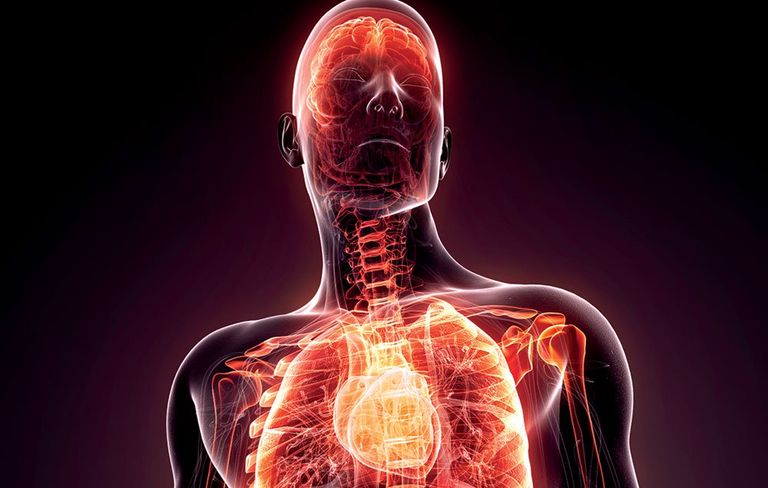Inflammation appears to play a role in the development of major depressive disorder (MDD) and bipolar disorder (BPD) in patients who have increased inflammatory biomarkers. Experts at WCP 2019 provided an overview of emerging knowledge on the relationship between systemic inflammation and MDD, and insights into how the presence of inflammatory biomarkers might influence choice of treatment.
For more on the role of inflammation in mental health, please see a series of articles on the topic within the Lundbeck Institute Campus: https://institute.progress.im/en/content/inflammation-and-brain-disorders-series-articles
Increased inflammatory biomarker levels in MDD
Evolutionarily, inflammatory pathways interacted with the brain to produce behavioral responses to avoid pathogens and predators, explained the first speaker. Such interactions now appear to be associated with the development of MDD and may contribute to non-responsiveness to antidepressants.1
Higher CRP levels are linked to more MDD symptom severity in women, but not in men
Many inflammatory biomarkers have been studied in MDD, particularly C-reactive protein (CRP), interleukins (ILs) 1-beta (β), 2, 4, 6, 8, and 10, and tumor necrosis factor alpha (TNF-α); and findings include:
- a significant association between higher CRP levels and higher overall Montgomery Aasberg Depression Rating Scale (MADRS) symptom severity in women, but not in men2
- an association between higher baseline levels of IL-17 — which plays a role in dopamine synthesis — and greater symptom improvement in patients with MDD treated with a combination of two antidepressants modulating dopaminergic transmission3
A meta-analysis of 26 studies of CRP and MDD revealed a small, but highly significant (p<0.01), effect between CRP and MDD.
The speaker concluded:
- there is a need to better differentiate the role of immunomarkers
- some patients with MDD might benefit from anti-inflammatory treatments
- studies need better standardization
Can inflammatory markers inform treatment selection for MDD?
A major challenge in treating MDD is the lack of consistent clinical or laboratory predictors of response to antidepressants.
Inflammatory markers, such as CRP, might predict response to antidepressants
Inflammation is a key process affecting MDD symptomatology and moderates the treatment response, said the second speaker. CRP levels might therefore differentiate patient response to treatments with different mechanisms of action.
The potential role for CRP, as a predictor of response to antidepressants, is currently being investigated in a clinical trial — Promoting Enhanced Pharmacotherapy Choice Through Immunomarkers Evaluation in Depression (PRECISE-D). The completion date of PRECISE-D is estimated June 2021.4
Increased inflammatory biomarker levels in BPD
A meta-analysis providing evidence for significant elevation of proinflammatory, anti-inflammatory, and regulatory cytokines in BPD was presented by a third speaker.5
Thirty studies with a total of 2599 participants, 1351 with BPD and 1248 healthy controls, revealed that compared to controls, patients with BPD had:
- significant increases in IL-4, IL-6, IL-10, soluble IL (sIL)-2 receptor, sIL-6R, TNF-α, soluble TNF receptor-1, and IL-1 receptor antagonist levels
- tendency to higher levels of IL-1β and IL-6
- no significant difference in IL-2, interferon (INF)-gamma (γ), C-C motif ligand 2, and IL-8
Levels of IL-2, IL-4, sIL-6R, and INF-γ were unrelated to medication status.
Proinflammatory, anti-inflammatory, and regulatory cytokines are increased in bipolar disorder
CRP concentrations are also increased in BPD and are higher during mania than during depression and euthymia.6 The speaker commented that CRP decreases on achieving euthymia after treatment of an acute manic or depressive episode. He also noted that:
- increased inflammatory biomarker levels in BPD are associated with lower brain volumes and impaired cognitive function
- an increase in inflammatory index predicts a depressive relapse
- further studies are needed to identify subgroups of patients who might benefit from anti-inflammatory agents
Our correspondent’s highlights from the symposium are meant as a fair representation of the scientific content presented. The views and opinions expressed on this page do not necessarily reflect those of Lundbeck.




